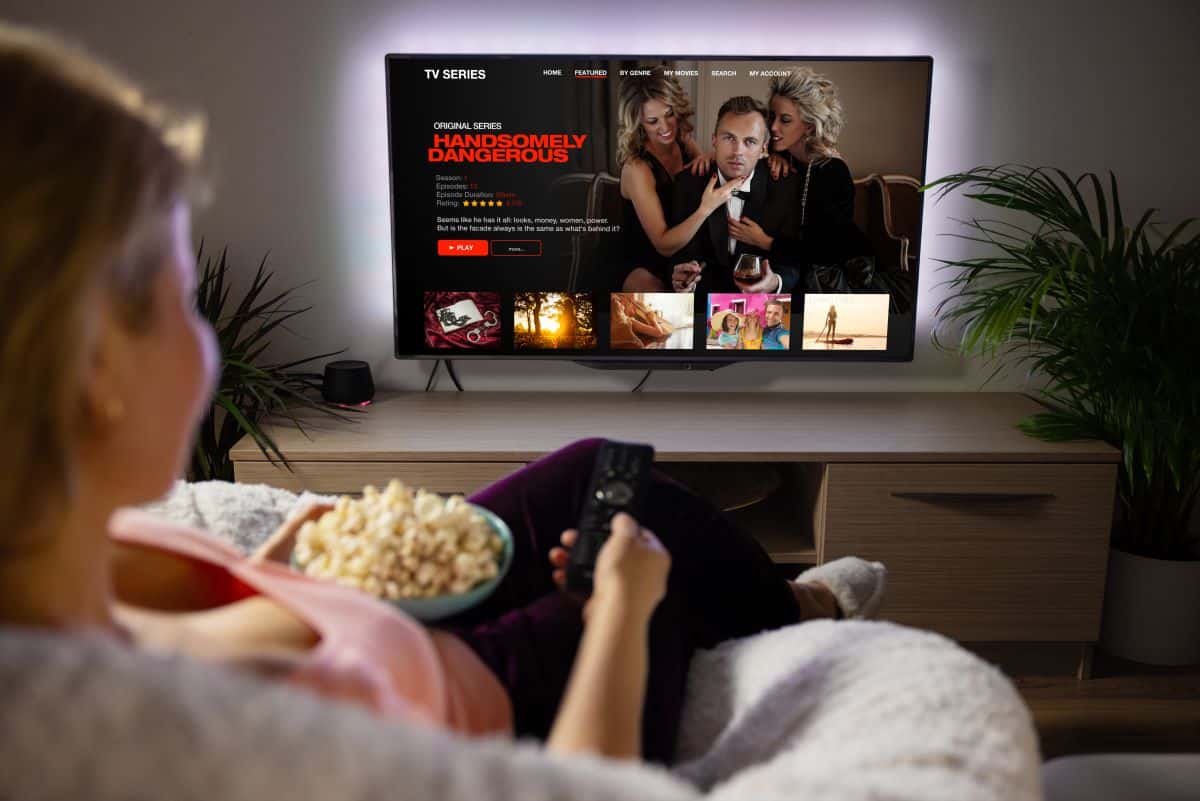the essentials in brief
That depends on what is important to you. OLED offers better picture quality with high contrast. Nano Cell offers good color accuracy and brightness. Find more benefits here...
NanoCell and QLED are both LCD-TVs with nanoparticles for color enhancement. The difference lies in the type of backlight. Find out more about how it works here...
The lifespan of a TV depends on various factors such as usage, care and environment. In general, LED and QLED TVs have a longer lifespan than OLED TVs because they do not have self-illuminating diodes, which can lose their luminosity over time.
NanoCell or OLED? You want a new one TV buy, but you are not sure which one Technology you should choose? Both have their strengths and weaknesses, depending on what is important to you.
In this article, you'll learn everything you need to know about a informed decision hold true. We explain the differences between NanoCell and OLED, how they work, what image quality they offer and for which application scenarios they are suitable. We also give you some tips on what to look out for when buying.
Contents
NanoCell and OLED: what is that actually?

Nanocell is a technology from LG based on LED LCD TVs based. It uses nanoparticles that filter specific wavelengths of light to improve color accuracy and brightness. NanoCell TVs offer one high color variety and fidelity, but are on a Backlight reliant.
OLED stands for Organic Light Emitting Diode and denotes a technology based on self-luminous organic diodes based. OLED TVs require no backlight, since each pixel can be switched on and off individually. OLED TVs have high contrast and deep black levels, but can suffer from burn-in.
Pros and cons of NanoCell and OLED
Nanocell has the benefit of it cheaper, rather and less susceptible to burn-in effects than OLED is. The downside of NanoCell is that it cannot display true black, uses more power, and loses image quality at extreme viewing angles. OLED has the benefit of it real black, very good contrasts and brilliant colors offers. It has the disadvantages of being more expensive, darker and more prone to burn-in than NanoCell.
How NanoCell and OLED work
NanoCell and OLED are two different types of display technologies, which differ in the type of light generation and control. NanoCell is an evolution of LED-LCD technology that uses a backlight to create the image. This backlight consists of several LEDs (light emitting diodes) behind an LCD panel (Liquid Crystal Display) are arranged. The LCD panel consists of many small liquid crystal cellsthat are able to transmit or block the light. Each cell corresponds to one pixel on the screen.
To the Colors generate are in front of the LCD panel three color filters attached: Red, Green and Blue (RGB). Each pixel consists of three sub-pixels, each of which can represent one of these colors. Different hues can be created by using these three primary colors mixed become. To control the brightness of each pixel, the Backlight dimmed or boosted.
NanoCell adds to the LED LCD system another layer added: a layer of nanoparticles, which is located between the LCD panel and the color filter. These nanoparticles have the property of Absorption or Reflection certain wavelengths of light. In this way, unwanted colors can be filtered and the purity of RGB colors can be improved. The result is greater color accuracy and brightness.
OLED, on the other hand, is a completely different technology that does not require a backlight. Instead, she uses Organic Light Emitting Diodes, the produce light themselves can. An OLED is made of an organic layer carbon compounds, which is sandwiched between two electrodes. The organic layer is excited to glow when current flows through the electrodes. Each OLED corresponds to a pixel on the screen.
The Color is generated by the OLEDs three Color filter installed are: Red, Green and Blue (RGB). Each pixel is made up of three sub-pixels, each capable of displaying one of these colors. By mixing these three basic colors, different shades arise. The brightness of each pixel is controlled by turning the OLEDs on and off.
TV Technologies
Did you know that in the future there may be TVs that can adapt to the shape and size of the room? These TVs would use flexible displays that could bend, fold, or roll. For example, you could pull a TV out of a drawer, stick it on the wall or spread it out on a table. This technology is also known as FOD (Flexible OLED Display) and is still under development.
Application scenarios of NanoCell and OLED

Both Nanocell as well as most OLED are high-quality televisions that are suitable for different application scenarios suit. Depending on what you want to do with the TV, you can choose one of the two technologies. Here are some examples of typical application scenarios and which technology is best suited for them.
- Films and series: OLED is probably a better choice if you enjoy watching movies and series. OLED offers an immersive viewing experience with high contrast, deep blacks and vivid colors. OLED is particularly good for dark scenes. This is the case, for example, with horror films or thrillers. Also, OLED supports more HDR formats that offer more detail and realism. However, OLED isn't as bright as NanoCell, which means you'll want to darken your room to get the best picture.
- Sports and games: If you enjoy playing or watching sports or video games Nanocell might be the better option for you. NanoCell gives you high brightness and color accuracy so you can see every detail. NanoCell is particularly suitable for bright scenes, for example football games or racing games. In addition, input lag with NanoCell is generally lower than with OLED, which means that your commands are implemented faster on the screen. However, OLED has a bigger one Viewing angle than NanoCell, which means you see a good picture from every angle.
Tip: Input lag is the time between pressing a button or button on your controller or keyboard and the on-screen response. The lower the input lag, the better the gaming experience.
You should pay attention to this when buying a television
Once you've decided on a NanoCell or OLED TV, there are still a few things you should consider Purchase should note. Here are some tipsto help you find the right TV for you.
- Size: The size of the TV is an important factor that depends on personal taste and the space available. In general, the bigger the TV, the better the viewing experience. However, you should also make sure that the TV is not too big for your room, otherwise it can cause eye strain or headaches.
- Resolution: The resolution of the TV is another important aspect that determines how sharp and detailed the picture is. The most common resolutions are 4K (3840 x 2160 pixels) and 8K (7680 x 4320 pixels). The higher the resolution, the better the image quality. But you should also make sure that the resolution matches your viewing distance, otherwise you won't be able to tell the difference.
- HDR: HDR is a technology that enhances contrast and color depth of an image increased. HDR is particularly important for depicting realistic scenes such as landscapes, sky or fire. HDR is not a specific format, but an umbrella term for different formats with different requirements and advantages. The most popular HDR formats are HDR10, HDR10+, Dolby Vision and HLG (Hybrid Log Gamma). You should make sure your TV supports at least HDR10 as this is the base format.
Note: To see HDR, you need to enable HDR in the settings of your TV and your sources.
NanoCell or OLED?
NanoCell and OLED are two different technologies for televisions, each their Advantages and disadvantages have. Depending on what is important to you and how you want to use your television, you can choose one of the two. We hope this article has helped you learn more about NanoCell and OLED and make an informed decision.

